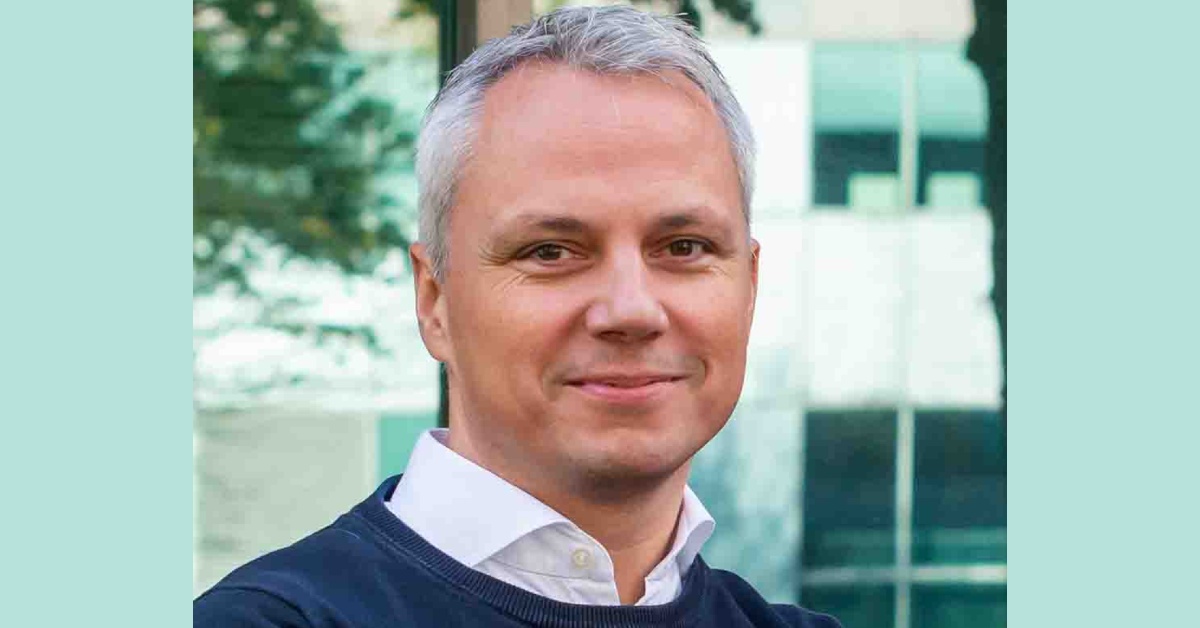The first real banknotes in Europe were issued in 1661 by Sweden’s first bank, Stockholms Banco – the predecessor of Riksbank, Sweden’s central bank. Although these banknotes were initially quite popular, their success was short-lived. Nearly 344 years later, a fintech startup was founded in Stockholm. A startup that quickly rose in popularity as a leading e-commerce payment company. This time, however, the success was not ephemeral.
This startup received a banking license in 2017, and recently raised $650M (€552.6M) in an equity funding round, at a post-money valuation of $10.65B (€9.01B). This makes it the highest-valued private fintech in Europe and now the 4th highest worldwide. The startup in question is Klarna.
The highest-valued private fintech in Europe
The funding round was led by Silver Lake, alongside GIC – Singapore’s sovereign wealth fund – as well as BlackRock and HMI Capital. Also, Merian Chrysalis, TCV, Northzone, and Bonnier have acquired shares from existing shareholders. They will join current investors such as Sequoia Capital, Dragoneer, Permira, Commonwealth Bank of Australia, Bestseller Group, and Ant Group.
According to the company, the funding will help Klarna further invest in its unique shopping offering, continue to grow its global presence, and accelerate its strong momentum across all markets. Klarna claims that it is growing particularly rapidly in the US and now has more than 9 million consumers.
“Our US network has grown to more than 9 million consumers, we see an average of 20,000 new app downloads a day and thousands of retailers are partnering with us to implement forward-thinking strategies that will help them compete effectively, build lasting connections with consumers and provide the payment flexibility their consumers need during this time,” says David Sykes, Head of US at Klarna.
Let’s talk numbers
The Klarna app has more than 12 million monthly active users worldwide, with 55,000 daily downloads, which according to the company, significantly outpaces its nearest competitor with almost three times as many downloads over the last year. Its volume and revenue for the first half of 2020 grew 44% and 36% year-on-year to more than $22B (€18.7b) and $466M (€396.2M) respectively.
Klarna caters to nearly 85 million consumers across 200,000 merchants in 17 countries, with the help of nearly 3500 employees. The company claims that, on average, one million transactions are processed a day on its platform.
What makes Klarna click?
One of the key factors that has greatly contributed to the growth of Klarna is its buy now, pay later shopper loyalty program, Vibe. The program was launched in June this year and, according to the company, it is the first buy now, pay later service provider to offer a rewards program. Vibe is currently available to consumers in the US and will soon be launched in Germany, Australia, Sweden, and the UK.
According to Klarna, it developed the Global Vibe program with direct input from customers, who said they often find traditional credit card loyalty memberships confusing and difficult to navigate and that they wanted more freedom within a rewards program.
Program members earn one “Vibe” (point) for every $1 they spend, and Vibes can be redeemed for rewards such as gift cards from customer favorites like Starbucks, Sephora and Uber.
Talking about the impact of Klarna’s BNPL (Buy Now, Pay Later) program on its growth, Jeroen de Bel, founder & partner, Fincog tells Silicon Canals, “I believe the BNPL always formed a core part of their payment acquiring solution. Klarna competes with other online payment methods such as local e-payment schemes (ie iDeal), Paypal, credit cards etc. The BNPL was a unique offering providing firstly, an alternative to consumers (especially those short on money), and secondly, an easy payment method for consumers (as opposed to the ‘hassle’ of getting your bank details or credit card). This helped merchants to drive conversion, and helped Klarna grow.”
Aman Ghei, Principal, Finch Capital believes, “E-commerce merchants care about conversion, and BNPL has done wonders for merchants increasing conversion of the basket. There are a lot of BYPL competitors, whether it’s Affirm in the US, Afterpay/Zipmoney in Australia, Twisto in CEE, and others. This is typically geographic centric because there is typically a lack of network efforts as these companies have spent years building out sales functions, integrating payment service providers, and understanding risk functions.”
“Klarna obviously has done an amazing job particularly in UK/Europe investing in getting some of the best merchants, brand campaigns, and educating people about BYPL and building a seamless experience,” he adds.
Calculated risk
The reason why Klarna is able to offer its BNPL services is because of its algorithmic risk assessment process that is based on behavior and credit scores. According to the company, Klarna’s credit risk management is executed by various business units, with the required standards ensured and managed through the analytics competence area.
Once the risk appetite limits are defined by the company’s board and executive management, these business units provide support with specialisation in risk systems, data science and modelling, fraud management, compliance, and legal management.
In order to mitigate credit risk from individual consumers, Klarna uses proprietary scoring models to perform an applicant’s credit assessment. Model inputs consist of a number of purchase-related data points, such as purchase amount and the specific merchant from which the purchase is made.
This is combined with historical internal customer payment and credit behavior history and external information, to produce the scoring models. The company’s credit risk appetite is also defined by region and product and approved by its management and the board. This is monitored regularly by teams in finance and product business units.
However, is Klarna’s risk assessment process better than traditional credit risk assessment practices?
Don Ginsel, founder and CEO of Holland FinTech, says, “Given the limitations of the use of personal data, there are limitations on how far you can optimise credit models. I do believe that using transaction data, like Klarna mostly does, you get a much better credit image than using for example income statements, the traditional way.”
Ghei believes that data is the key when it comes to risk assessment, and companies like Klarna don’t just rely on credit-bureau data to make decisions. It is a function of supplementing these data with non-traditional data sources either available from mobile phone devices (location, browser, etc) or open banking transactions for those who don’t have a credit score.
“At the end of the day, Klarna needs to provide merchants and consumers a great experience which translates into high approval rates for risk assessment, while they need to minimise defaults on their end. This can only happen if they have access to data sets that go beyond traditional sources,” he adds.
However, it will be interesting to see how Klarna’s risk assessment process holds up during this current pandemic.
“I’m not informed about their exact credit scoring process and risk scoring cards. As a general remark, when it comes to payments and lending, it’s always a balance between risk/user experience/cost. Klarna has a clear strength in UXP. For their risk model, the current economic downturn is a real-life test on the strength of their risk scoring. We will know more when their next financial reports are published and can see the risk losses (and compared with peers),” says De Bel.
Smoooth Dogg
Back in January 2019, Klarna partnered with rapper and global pop culture icon Snoop Dogg for the company’s “Smoooth” campaign. The collaboration entailed Snoop Dogg becoming Smoooth Dogg and the face of a major campaign called “Get Smoooth”, as well as Snoop Dogg becoming a minor shareholder in Klarna.
“As a communicative concept, “Smoooth” encapsulates Klarna’s strategy as well as its promise in a single word, meaning: removing friction from the world of pay later payments,” according to the company.
As the next step of this collaboration as Klarna and Snoop Dogg also released a new collection of products. The product range included golden peanut butter, a silky bed set, cashmere toilet paper, a smoooth robe, and a 22 ft high inflatable slide.
Three commercials featuring Snoop Dogg were also shot. This campaign was a genius move by the fintech company; another key factor that sets it apart from its competitors. Snoop Dogg is a living brand himself, and the fact that Klarna could manage to get him on board as an investor, as well as find the common thread of “smoooth” to base this campaign upon was inspired thinking. The campaign certainly managed to communicate Klarna’s message, as well as propel its brand awareness, especially among the millennials.
Pandemic, international expansion and net losses
According to Klarna’s interim report Jan-Jun 2020, the company witnessed a net loss of SEK (Swedish krona) 522M – €49.13M – between January and June. This was nearly seven times higher than the SEK 73M (nearly €6.9M) net loss it recorded during the same period in 2019.
The company’s total operating expenses before credit losses grew 45% to SEK 4B, during Jan-Jun 2020. According to the company, this is in line with the plan as the commitment stands to further invest to deliver value in terms of brand awareness and a consumer-friendly product range. During this period, the company launched in there new markets, upgraded the Klarna app, launched a loyalty program, and also hired top talent across competencies and markets.
“Klarna launched in the US in 2019 and coupled with a massive brand campaign invested significantly in the market. What one must understand is that launching a new market in BYPL is not as simple as turning on a switch. Default, risk, underwriting are local and don’t easily translate across geographies. As a result, Klarna’s default rates in the US have also been relatively high as their risk teams learn from consumer behavior. This is not surprising,” explains Ghei.
Ginsel believes Klarna is still on a path to growth and therefore wants to invest heavily. “And they are fortunate to have investors backing that strategy!” he exclaims.
The home advantage
Stockholm is home to one of the largest and best-known fintech scenes in Europe. According to a report, fintech companies in the Nordics raised €347M in investments in 2018 from 86 deals. Of those, Sweden accounts for half of all investments, with €174M from 39 funding rounds – of this €174M, Stockholm received €170M from 35 rounds.
Stockholm is home to nearly 114 banks of various sizes and specialisation, and nearly 400 fintech companies. One of the key reasons why Sweden is a hotbed for fintech companies is the fact that Sweden is one of the leading Nordic countries to transition towards a cashless society.
According to the report, four out of five purchases in Sweden are made electronically, and Sweden’s central bank, Sveriges Riksbank, estimates that between 2012 and 2020, cash in circulation will have declined by 20–50%. This has directly resulted in an increase in electronic payments.
Therefore, the contribution of Sweden and its fintech ecosystem towards the growth of major fintech players such as Klarna and iZettle, simply cannot be denied.
“The nordic countries in general have very advanced payment and banking ecosystems. Unlike other economies in western europe (france, germany, uk), the existence of cash is minimal. As a result of this cashless state, companies can test in local markets and understand adoption quickly. They also know if they want to build a big company, Sweden is only a test market, and that clarity enables Sweden to standout not only in Fintech but other categories,” says Ghei.
Image credits: Klarna










01
From telecom veteran to Dutch Startup Visa success: The Jignesh Dave story